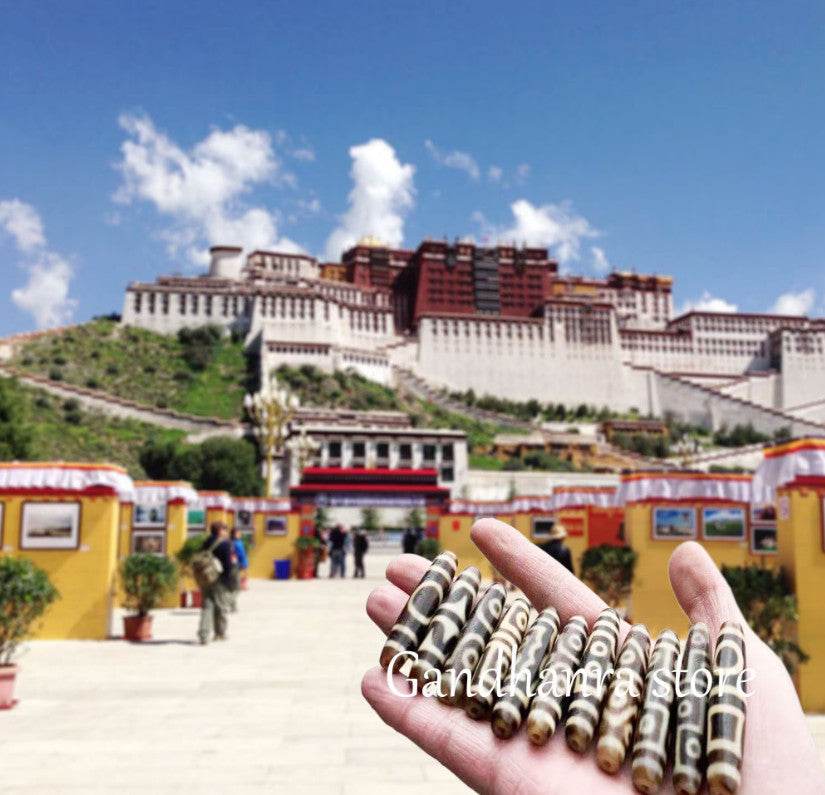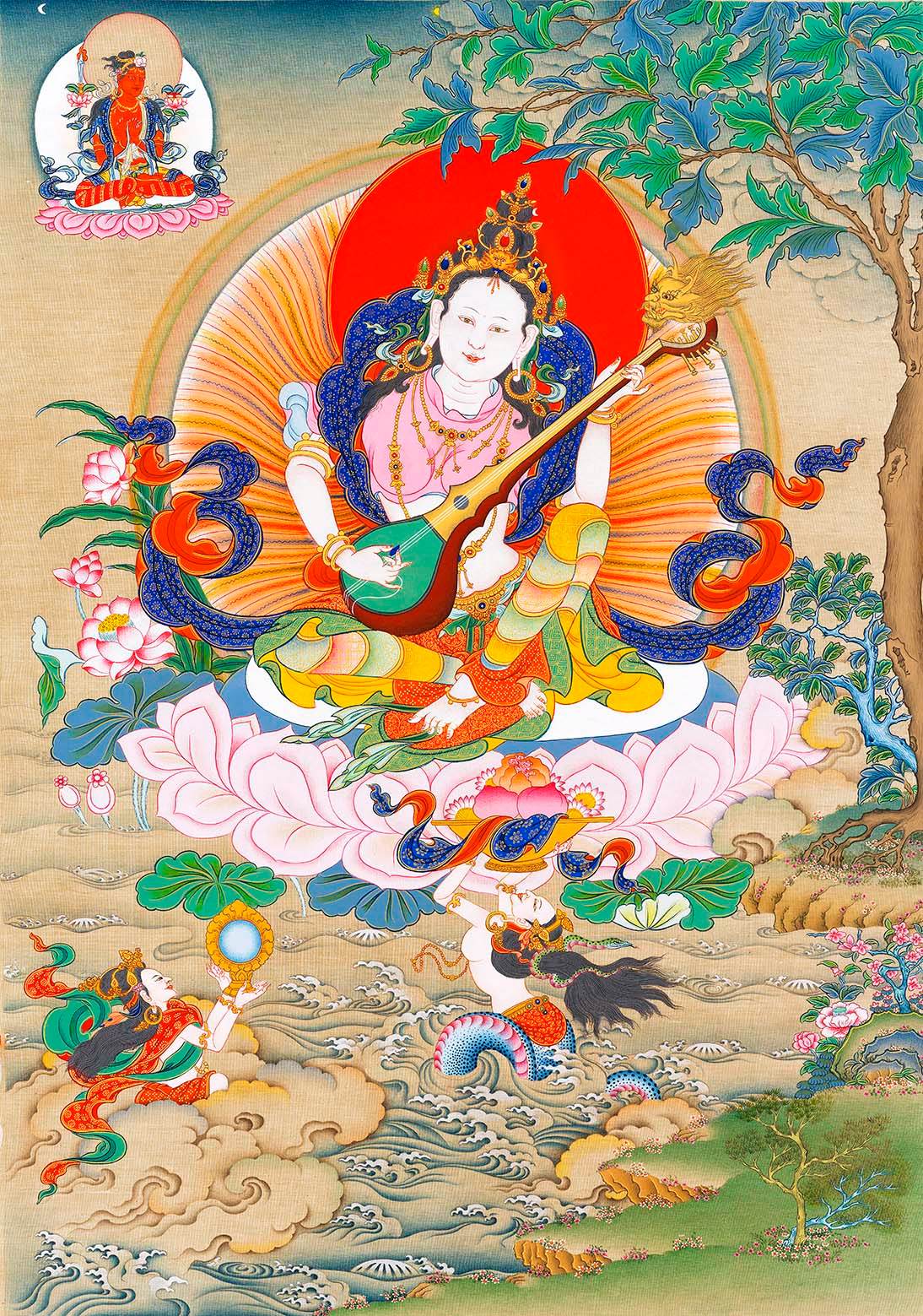
Guhyasamaja: The King of Tantra - Embodiment of the Secret Assembly
Guhyasamaja,
the "Secret Assembly," embodies the profound integration of the body, speech, and mind of all Buddhas. He is a central deity in Tibetan Buddhist Vajrayana, representing the ultimate essence of tantric practice and the path to enlightenment through the transformation of passions into pristine awareness.

Click here to shop Guhyasamaja thangka
Introduction to Guhyasamaja
Guhyasamaja (Sanskrit: Guhyasamāja; Tibetan: Sangwa Düpa) is one of the most important and earliest yogatantra deities in Tibetan Buddhism, revered as the "King of the Father Tantras." His name translates to "Secret Assembly," signifying the gathering and union of all the secret energies and qualities of enlightenment within a single mandala.
Unlike fierce deities, Guhyasamaja typically manifests in a peaceful and majestic form, often depicted in sacred embrace with his consort, known as Yab Yum. This form symbolizes the inseparable union of great compassion (method) and profound wisdom (emptiness), the two essential wings of enlightenment.
The Origins and Significance of Guhyasamaja
The Guhyasamaja Tantra is a foundational text for the highest classes of tantra, especially within the Gelug school, where it is one of the primary meditation deities. It is said that the teachings of Guhyasamaja were expounded by Buddha Shakyamuni in his supreme nirmanakaya form.
Guhyasamaja is considered the root of all father tantras. His practice focuses on the stage of generation (utpattikrama), where the practitioner visualizes the detailed mandala and deity to purify ordinary perception, and the stage of completion (sampannakrama), which involves working with the subtle energies of the body to realize the clear light nature of mind.

The Symbolism of Guhyasamaja
Guhyasamaja's iconography is rich with symbolic meaning, each element representing a facet of the enlightened state. The most common form is Akshobhyavajra Guhyasamaja, who is blue in color.
Color (Blue): Represents the immutable and mirror-like wisdom of Buddha Akshobhya, reflecting all phenomena without distortion.
Three Faces: Symbolize the purification of the three poisons—aversion (blue center), attachment (white right), and ignorance (red left)—and the mastery over the three times (past, present, future).
Six Arms: Represent the perfection of the six paramitas (generosity, ethics, patience, diligence, meditation, and wisdom).
Yab Yum Posture: The union with his consort, Sparshavajri, signifies the indivisible union of:
Great Bliss (Yab Yum) and Emptiness
Skillful Means (Upaya) and Wisdom (Prajna)
Vajra and Bell: The primary right hand holds a vajra, symbolizing method and the indestructible nature of reality. The primary left hand holds a bell, symbolizing wisdom and the sound of emptiness.
Other Implements: The other hands hold a wheel, a lotus, a sword, and a jewel, representing other Buddhas, purified elements, and enlightened activities.

The Guhyasamaja Mantra
The core mantra for the practice of Guhyasamaja is:
"Om Ah Hum Guhyasamaja Hri Ha Ho Hri Ha Ho Hri He He He Hum Phat"
Meaning and Purpose:
This powerful mantra is used to invoke the presence, blessings, and enlightened qualities of Guhyasamaja. It aids in purifying the mindstream, overcoming obstacles on the path, and ultimately realizing the state of the "secret assembly" within oneself—the unified mandala of one's own purified body, speech, and mind.
How to Practice Guhyasamaja Meditation
The full practice of Guhyasamaja is complex and requires formal initiation (empowerment) and guidance from a qualified teacher. However, its general structure includes:
Preliminaries: Taking refuge, generating bodhicitta, and performing purifications.
Visualization (Generation Stage): The practitioner meticulously visualizes themselves as Guhyasamaja in the complete mandala, with all its symbolic attributes, cultivating divine pride and pure perception.
Mantra Recitation: Reciting the mantra with single-pointed concentration to stabilize the visualization and absorb the deity's wisdom.
Dissolution (Completion Stage): The mandala and deity are dissolved into emptiness, and the practitioner rests in the nature of the clear light mind.

Conclusion
Guhyasamaja is a profound path to enlightenment, embodying the secret that our own aggregate of body, speech, and mind is inherently a mandala of bliss and emptiness. His practice teaches us to see the world as a pure land and all beings as deities, transforming our daily experience into a continuous sacred dance.
May the blessings of Guhyasamaja lead all beings to realize the secret assembly of their own enlightened nature!
Have you ever contemplated the profound symbolism of Guhyasamaja or other tantric deities?
Share your reflections in the comments below







4 commenti
lkhy9o
bclqj1
bo7a5a
bo7a5a